Yuma Proving Grounds Quartzsite Loop
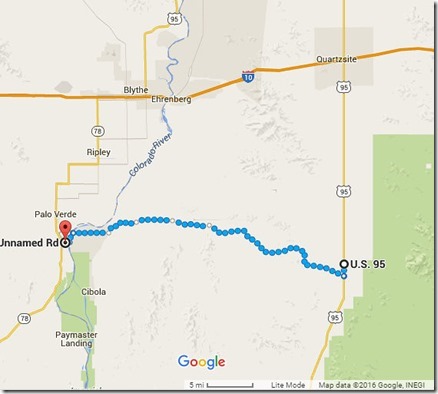 Less than a half-hour south of Quartzsite, Cibola Road cuts west across the northern section of the Yuma Proving Grounds (not shown on the Google map). Normally, I wouldn’t have a lot of incentive to go roaming through un-exploded artillery shells, but the map showed this road going all the way to, and across, the Colorado River. We decided to give it a go.
Less than a half-hour south of Quartzsite, Cibola Road cuts west across the northern section of the Yuma Proving Grounds (not shown on the Google map). Normally, I wouldn’t have a lot of incentive to go roaming through un-exploded artillery shells, but the map showed this road going all the way to, and across, the Colorado River. We decided to give it a go.
Like so many places we’ve been, the road is called different names on different maps, but if you look for Cibola at the Colorado River, and follow roads going east, you’ll locate this road. It’s right near MM85 on Arizona SR-95.
Turning onto the road, we were soon confronted with a forest of signs, darkly warning of the dangers (?) ahead of us. It appeared that we were about to be dusted, tripped up, arrested, broken down, unauthorized or blown up at nearly any turn in the road.
Click the last picture above (shell casing) or HERE for the range clearance document for Yuma Proving Ground.
One of the signs (forgot to snap a pic) actually demanded that we acquire a “range clearance”. (I had not at that time seen the document in the previous link.) When I called the number, a bored soldier reminded me that I was in a “restricted area” and what were my intentions? I told him I’d like to explore the desert, simple. He said I’d better remain on the main road (ominous tone of voice) and I said I would. I said that I supposed there was a danger of encountering live ordinance, and he was much more friendly after he understood that I understood. But basically he seemed pretty uninterested in me. We ran into one other guy who traveled the road a lot, and he said he never called in.
As it turns out, Cibola Road is a public easement, and “well traveled” by desert standards (which is to say, we saw two vehicles in 39 miles and two hours). As long as travelers stay within 100 feet or so of the roadway, no problem. In fact, we saw multiple evidence of campsites, fire-rings, etc., along the way.
Once inside the proving grounds, there’s little evidence that the Army is blowing the crap out of things on a regular basis. No shell-holes or burned-out buildings or strafing-run pock-holes along the road. In fact, it’s an outright pleasant tour through some nice desert landscape. Occasionally, some curiosities spring up – but they’re in the distance, and that 100-foot barrier is almost palpable. We definitely were not tempted to go investigate (but we sure would like to).
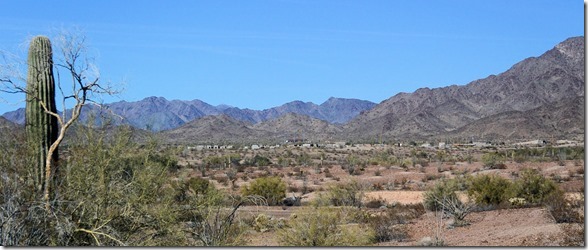
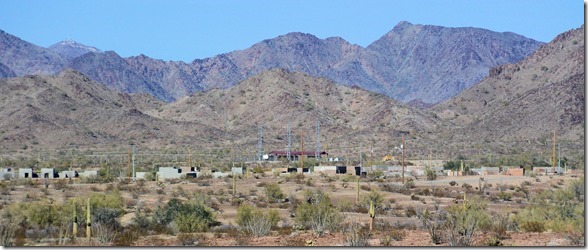
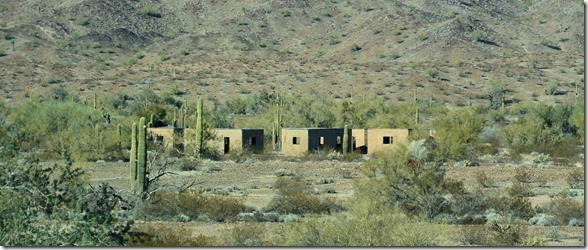
None of the buildings showed any damage from artillery hits or such. Not even paint marks from dummy rounds or marker rounds. So we’re stuck with being curious about what they are for. Are they just abandoned relics or do they have a current purpose? We’ll have to find out some day.
Throughout the drive across the Grounds, we were presented with un-populated desert scenes. Of course, it’s no surprise that it’s not populated, what with the bullets and shells flying about (though we never saw any “action”). But the empty landscape was still a pleasure, as always in the vast southern deserts.
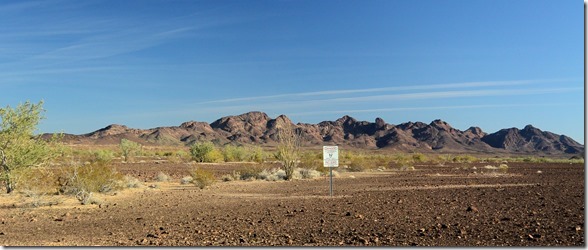
Coming out of the hills and ridges down to the Colorado side of the Proving Grounds, we could look back and see the rising terrain behind us – – –
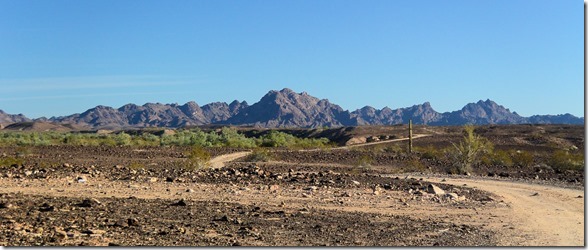
– – – and look ahead to the pastoral fields south of Blythe, watered by the Colorado River and bounded again by more ridgelines to the west.
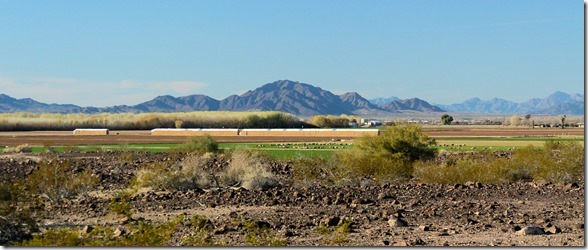
Signs of civilization sprouted up again – – –
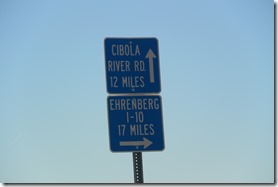
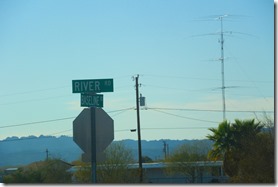
– – – but the wildness was still there, hanging around the edges. A group of Gray Herons was being social in a fallow farm field, and the nearby Cibola Wildlife Refuge made a nice backdrop to the peaceful farmlands. [Edit: reader Mike T. noted that these are actually Sandhill Cranes, which (unlike herons) do flock together. They’re identifiable by a small red head-crest and tufted tail feathers. But give me a break — even with a telephoto, they DO look like herons. Don’t they? You can tell I’m not a birder….]
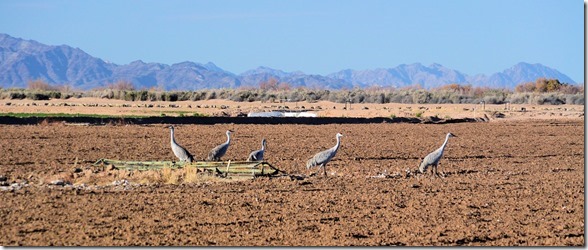
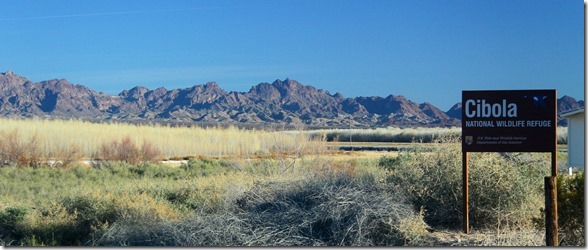
After a few U-turns and a lot of map-reading, we finally worked our way to what we had hoped to find: a tiny scratch of a one-lane bridge, spanning unpretentiously across the Mighty Colorado.
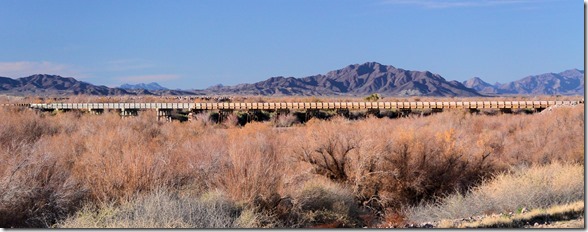
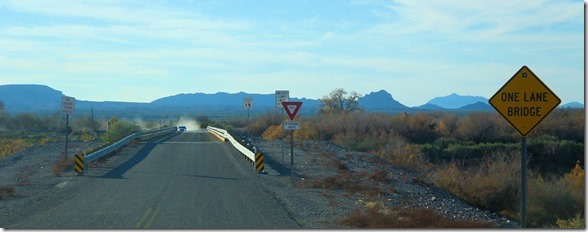
Actually, after all the upstream damming and water withdrawal, the famous River is little more than an irrigation canal at this point. It’s kinda sad really – – – the product of “man’s ingenuity” is often a drastic reduction in beauty. Compare this to twisted sandy washes, rippling rapids, and marshy habitats.
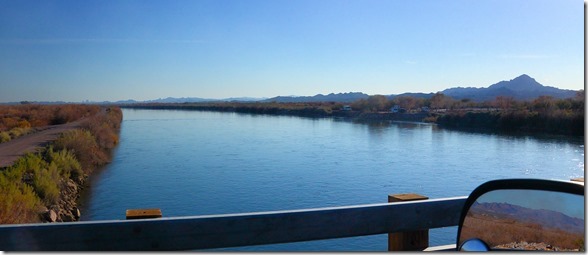
Once across the river, it’s a final, total feature change. Farmland, fields, agriculture. Thousands of bales of hay stacked along the roads, strange groves of tall white-barked trees (birch? aspen?) obviously tended, but for what? They don’t appear to be fruiting, or substantial enough for lumber. Another enigma.
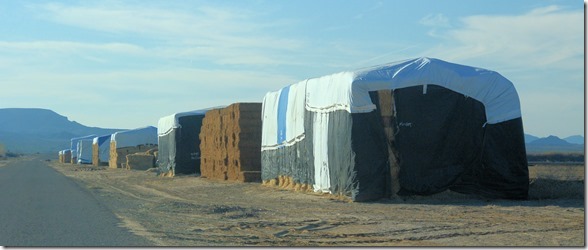
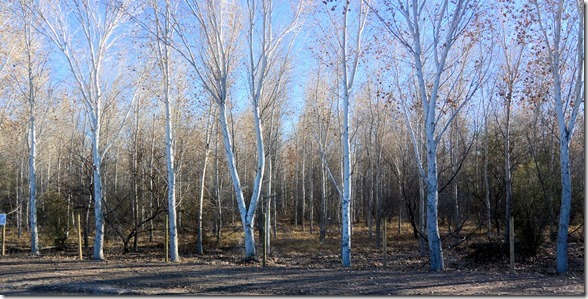
Along the river’s boundary, there is an occasional flooded area, probably intentional for wildlife habitat. Here, some semblance of “wild” creeps back in, if only for a half-mile or so.
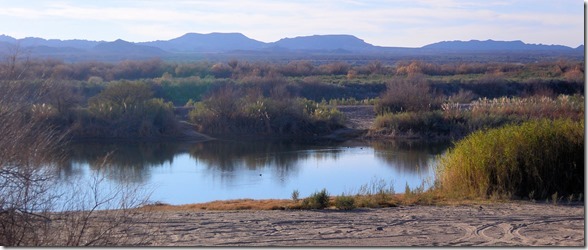
With the river’s bounty, the palo verde trees truly come to life. Gone are the scraggly, pale-gray drought-stricken hangers-on of the high desert. Here, the leafless trees brighten their bark to a comparatively brilliant green. They bush aggressively outward and upward, buoyed by the Colorado’s largesse.
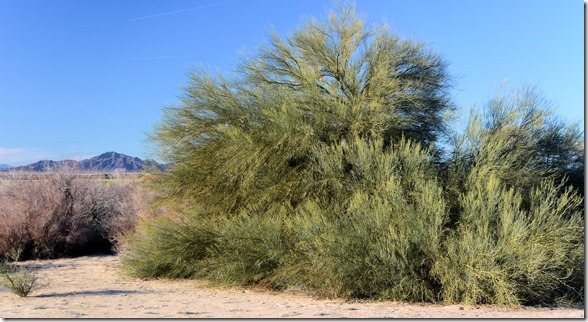
After 40 miles or so of dirt roads, from well-graded to well-rutted, we got back on the pavement again. A crunchy, sun-blasted stretch of tired asphalt led us past the verdant fields to Blythe – – –
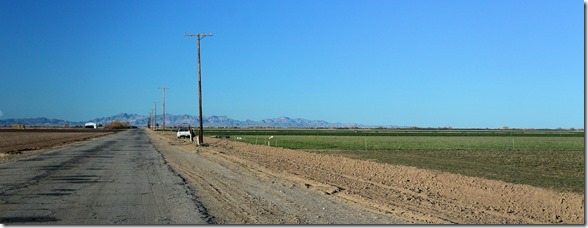
– – – and then the smooth bland trucks-howling-past stretch of I-10 brought us to the RV-teeming metropolis of Quartzsite.
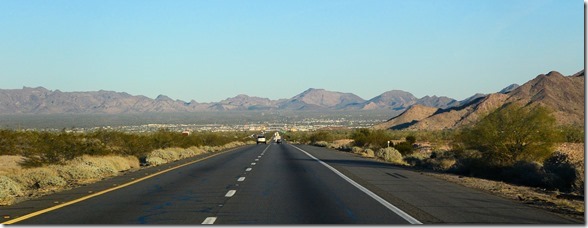
The whole day was about 100 miles, give or take. We got a nice tour through empty desert, courtesy of the U.S. Army, across a famous (but neutered) river, past pool-table-flat farmlands, and zippity-do up the Interstate to our camp. Not a bad way to spend an afternoon.
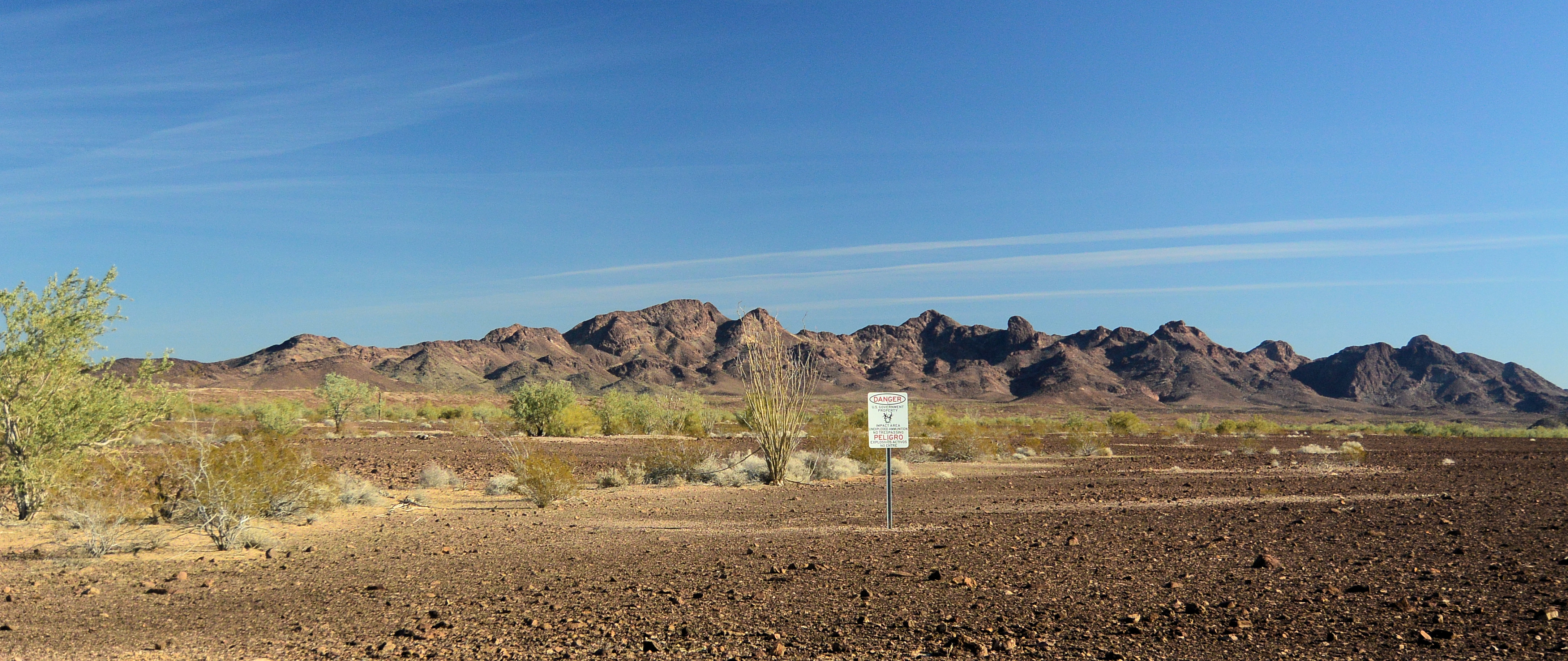
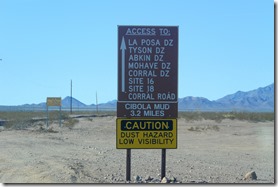
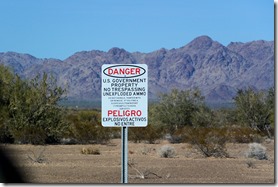
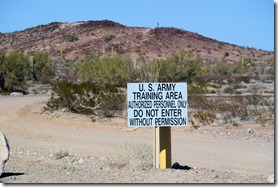
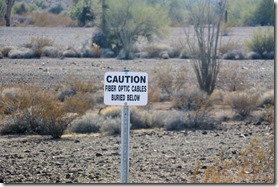
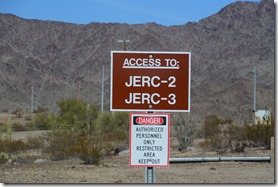
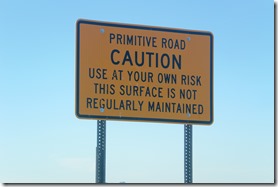
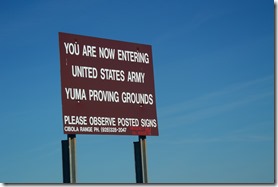
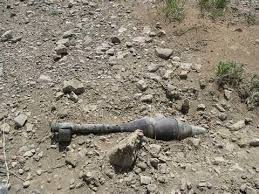
Another page in my collection from Greg Illes..thanks Greg
tony sr.
Hi Greg,
I recently signed up for your blog. I enjoy reading it and always pick up some tips. We’ll be in the Quartzite area later this spring, so your article was real timely. I was kind of surprised to see the photo with a group of Great Blue Herons congregating. They’re usually pretty solitary. Zooming in a little, I saw that the Herons are actually Sandhill Cranes. The little red cap on their head and the feather “bustle” can help when in doubt.
Happy trails.
Hey Mike,
Thanks for reading, and noticing the faux pas. Y’know, I thought about it and even remarked to Karin that cranes are typically soloists. I should have questioned my assumption more strongly. I’ll edit the post, using your tips.
thx
G.